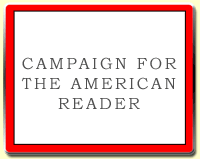 Isabella Hammad was born in London. She won the 2018 Plimpton Prize for Fiction for her story “Mr. Can’aan.” Her writing has appeared in Conjunctions and the Paris Review. The Parisian is her first novel.
Isabella Hammad was born in London. She won the 2018 Plimpton Prize for Fiction for her story “Mr. Can’aan.” Her writing has appeared in Conjunctions and the Paris Review. The Parisian is her first novel.At LitHub she tagged six great books of correspondence, including:
Alice Walker, The Color Purple (1982)Read about the other entries on the list.
The Color Purple begins:
You better not never tell nobody but God. It’d kill your mammy.This first line is a command by the protagonist Celie’s abusive stepfather, Alphonso: Celie takes his command literally, although, as we discover by the start of her second
DEAR GOD,
I am fourteen years old. I am I have always been a good girl. Maybe you can give me a sign letting me know what is happening to me.letter, her mother has quickly passed away anyway. By recounting her life in these letters addressed to God, Celie rebels against a silence that has been forced upon her by racism and misogyny. Halfway through the book, her sister Nettie leaves for Africa, and Celie stops writing to God and starts writing to Nettie instead, redirecting her self-expression away from the great white male in the sky and towards her literal sister, to whom she describes her discovery and development of her sexuality, her spirituality, and her capacity for self-love.
The Color Purple is among Jenn Ashworth and Richard V. Hirst's top ten modern epistolary novels, Sarai Walker's ten top novels about women's political awakening, Hollie McNish's top ten literary works about breasts, Sarah Alderson's top ten feminist icons in children's and teen books, Bruna Lobato's top ten must-read classics by African American authors, Hanna McGrath's top five fictional characters who tell it like it is, Andy McSmith's top ten books of the 1980s, and Sophie Ward's six best books.
--Marshal Zeringue



